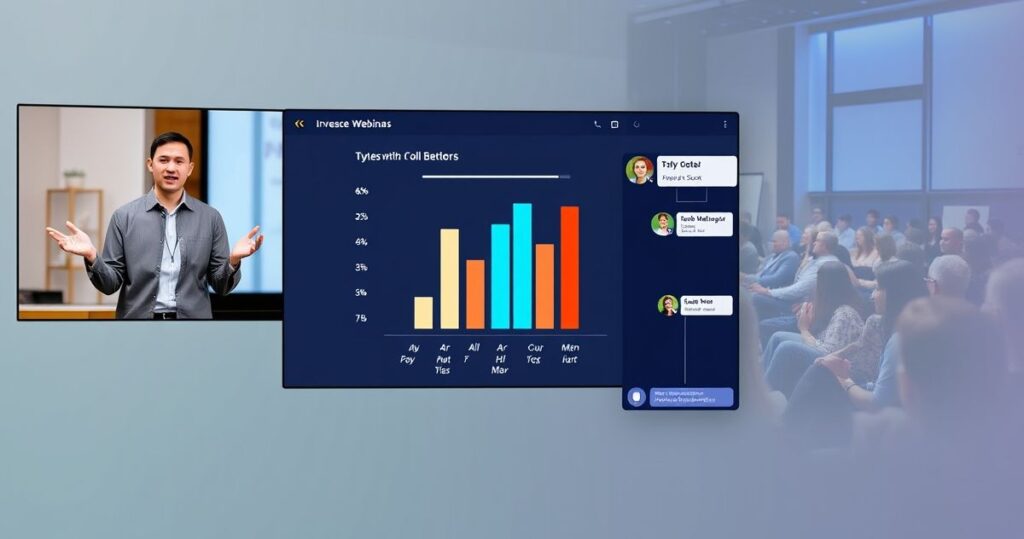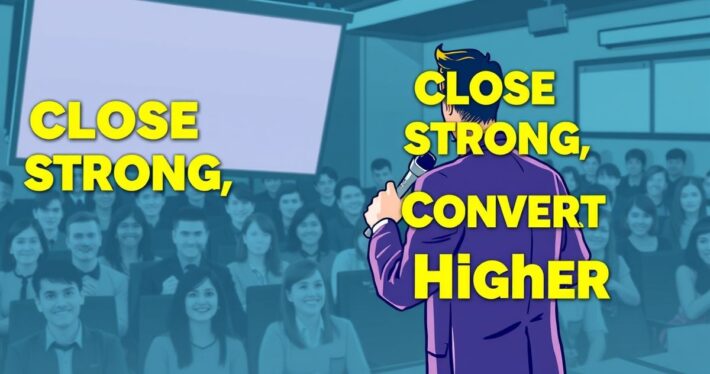How to Prevent Attendee Drop-Off During a Webinar

Webinars are a powerful tool for lead generation, education, and sales. But let’s be honest: even the most well-planned webinar can suffer from attendee drop-off. You’ve put in the effort to create a killer presentation, but halfway through, you notice the attendee numbers dwindling. Sound familiar? Don’t worry—this is a common challenge, and the good news is, it’s entirely preventable. In this article, we’ll dive into actionable strategies to keep your audience engaged from start to finish.
Why Do Attendees Drop Off During Webinars?
Before we get into solutions, it’s important to understand the root causes of webinar drop-offs. Typically, attendees leave because they’re bored, distracted, or feel like they’re not getting value. Other factors include poor timing, technical issues, or lack of interaction. Let’s face it: no one wants to sit through a one-sided monologue with slides that look like they were created in 2003.
How to Keep Your Audience Hooked
1. Start Strong with a Compelling Opening
Your first 5 minutes set the tone for the entire webinar. Instead of diving straight into the content, grab attention with a hook. For example, share a surprising statistic, pose a thought-provoking question, or tell a relatable story. Personally, I’ve found that starting with a quick, engaging poll or quiz can instantly involve the audience and set the stage for interaction.
2. Break Up the Content into Digestible Chunks
Ever heard of the “Rule of 3”? People tend to remember information better when it’s presented in threes. Break your webinar into clear sections: introduction, main content, and call-to-action (CTA). Within each section, use shorter, focused segments to maintain momentum. Bonus tip: AI-powered Slide Outline Creators can help structure your content for maximum engagement.
3. Incorporate Interactive Elements
Let’s be honest—passive listening is boring. Keep your audience engaged with interactive features like polls, Q&A sessions, and live chats. I’ve seen webinars where the presenter asked attendees to share their biggest challenge in the chat, and the responses sparked a lively, relevant discussion. Tools like AI-driven webinar platforms can automate these interactions, making it easier to keep the energy high.
4. Optimize Timing and Length
Webinars that drag on for hours are a recipe for drop-offs. Aim for a 45-60 minute sweet spot, with 15 minutes reserved for Q&A. If you’re covering a complex topic, consider splitting it into a multi-part series. Pro tip: analyze past webinars to identify when most attendees drop off, and adjust your timing accordingly.
5. Deliver Value Early and Often
Your audience wants actionable takeaways, not fluff. Share valuable insights early in the webinar, and keep reinforcing the value throughout. For instance, if you’re hosting a sales webinar, use a Webinar Offer Builder to structure a compelling offer and highlight its benefits early on.
6. Use Multimedia to Enhance Engagement
Text-heavy slides are a surefire way to lose your audience. Mix it up with visuals, videos, and animations. I once attended a webinar where the presenter used a short, funny video to explain a complex concept—it was memorable and kept everyone engaged. AI-powered tools can help you create professional, visually appealing slides without the need for a design team.
7. Create a Sense of Urgency
Scarcity and urgency can work wonders for retention. For example, let attendees know that exclusive bonuses or discounts are only available to those who stay till the end. A High-Value Bonus Brainstormer can help you generate irresistible incentives that keep your audience hooked.
8. End with a Strong CTA
Your closing is just as important as your opening. Clearly outline the next steps and make it easy for attendees to take action. Whether it’s signing up for a free trial, downloading a resource, or scheduling a consultation, your CTA should be compelling and straightforward.
Real-World Example: How XYZ Company Reduced Drop-Offs by 40%
Let’s look at a case study to see these strategies in action. XYZ Company, a B2B SaaS provider, noticed a 60% drop-off rate during their webinars. They implemented the following changes:
- Shortened the webinar from 90 to 60 minutes
- Added interactive polls every 10 minutes
- Used a Risk-Reversal Guarantee to build trust with attendees
- Created a bonus checklist for those who stayed till the end
The result? A 40% reduction in drop-offs and a 25% increase in conversions.
Additional Tips to Prevent Drop-Offs
-
Test Your Tech
Nothing kills engagement faster than technical glitches. Test your equipment, internet connection, and webinar platform before going live. -
Send Reminders and Prepare Your Audience
Send email reminders with the webinar agenda and any pre-work. This sets expectations and builds anticipation. -
Follow Up with Attendees
After the webinar, send a follow-up email with a recording, slides, and additional resources. This reinforces the value and keeps the conversation going.
Conclusion: Turn Drop-Offs into Engaged Viewers
Preventing webinar drop-offs isn’t rocket science—it’s about understanding your audience and delivering value in an engaging way. By incorporating interactive elements, optimizing timing, and using AI-powered tools, you can create webinars that keep your audience hooked till the end.
So, what’s your first step to reducing drop-offs in your next webinar? Start by implementing one or two of these strategies, and watch your engagement soar. After all, your audience’s time is valuable—make every minute count.



